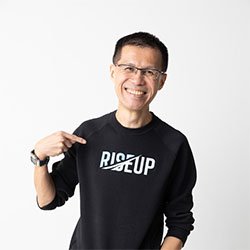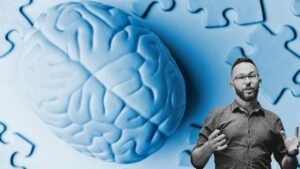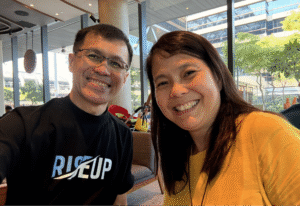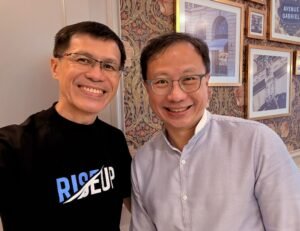Let’s talk about something that can change how you navigate life: strategic thinking. You might think it’s just for business leaders, but trust me, it’s way more than that. Strategic thinking is a mental process that can reshape your job, relationships, organisational goals, and how you make everyday decisions. It’s a comprehensive approach to understanding and addressing problems so you can make informed decisions and leverage opportunities (source: CMOE).
Think of it as a competitive advantage, helping you bridge the gap between where you are and where you want to be. It’s not about reacting to life—it’s about anticipating, planning, and acting. This mindset lets you proactively identify and chase goals across all life domains so your actions align with your long-term vision.
So, are you just getting by, or are you steering your own course? Let’s explore how strategic thinking methods can change your approach to life and turn everyday challenges into opportunities for growth and success.
What is Strategic Thinking?

At its core, strategic thinking is about seeing the big picture and making better decisions. It’s anticipation, planning and execution, so you step back and ask: Where am I headed? What challenges are on the horizon? How do I stay ahead?
The best part? Anyone can develop this skill. Research shows that strategic thinking can become second nature with practice, formal training and continuous learning. Successful leaders, professionals and problem solvers all share one thing: they can think strategically.
According to FM Magazine, improving leadership and strategic thinking skills is critical for leadership and better decision-making.
Why Businesses Thrive When Leaders Think Ahead

Strategic thinking is vital for business leaders. It’s about spotting threats and opportunities early, turning complex ideas into workable plans and guiding teams in the right strategic direction. Strategic thinkers don’t just react—they shape outcomes by decoding trends, managing risk and aligning decisions with a shared vision.
Think about it: instead of scrambling when challenges arise, you’re positioning your company for success before they even happen. Research shows that companies that integrate strategic foresight into their planning processes outperform their competitors.
According to Harvard Business Review, incorporating strategic foresight into business planning is key to long-term success. The takeaway? Companies focusing on long-term vision, strategy, adaptability, and execution have a much higher chance of long-term success.
The DNA of a Strategic Thinker

What characteristics make a strategic thinker stand out? They have a unique blend of leadership qualities that sets them apart:
Big Picture Thinking – They see how different challenges and opportunities connect.
Relentless Curiosity – They’re always learning and broadening their understanding of the world.
Problem Solving Skills – They break down complex ideas with logic and critical thinking.
Emotional Intelligence – They use self-awareness and strong interpersonal skills to lead.
Creativity and Adaptability – They see new opportunities and adjust their strategy when needed.
Strategic thinkers don’t just go with the flow—they take control, innovate and turn vision into reality. According to NEDA Global, developing a strategic mindset involves developing these skills and qualities to navigate complex situations.
How Strategic Thinking Impacts Your Personal Life

Let’s bring it closer to home. Strategic thinking isn’t just for business—it helps you make better decisions in life too.
Make better relationship choices – Ever wondered why some relationships thrive and others fizzle out? Strategic thinkers ask: “What do I want long term?” Studies show that intentional relationship choices lead to greater life satisfaction.
Plan significant life transitions – Whether changing careers, buying a house or starting a family, a strategic mindset helps you navigate substantial changes.
Achieve personal goals – Instead of hoping things fall into place, strategic thinkers set clear goals, break them into action steps and execute.
Strategic Thinking in Education

Education is where strategic thinking can pay off. Research from Harvard Business School shows that strategic planning improves learning outcomes. It helps students to:
Choose courses that meet requirements and build essential skills for future success so they are prepared for the professional world.
Align their academic pathway with long-term career goals so they stay focused on their end goal and make informed decisions about their education.
Continuous learning allows them to stay ahead of industry trends, adapt to the ever-changing job market, and remain competitive.
Great leaders know that education with strategic intent is key; knowledge drives innovation and smarter decisions. By integrating strategic thinking into educational practices, students can navigate their academic journey better and have more fulfilling and impactful careers
How to Strengthen Your Strategic Thinking Muscle

Want to level up your strategic thinking?
Here’s how:
Make Time for Reflection – Dedicate specific moments in your schedule to step back, assess your current position, and plan for the future. This practice enhances clarity and boosts your ability to make informed decisions. Regular reflection helps you align your actions with your strategic goals, ensuring you stay on the right path.
Sharpen Your Critical Thinking – Cultivate the habit of asking tough questions and challenging existing assumptions. This approach not only refines your problem-solving skills but also opens up new avenues for innovation. You can identify potential pitfalls and opportunities by critically evaluating information and situations, enabling better strategic planning.
Communicate Effectively – Master the art of clear and persuasive communication to gain buy-in from key stakeholders. Effective communication is crucial for executing a vision, ensuring everyone is aligned and working towards the same objectives. By articulating your ideas clearly, you can inspire confidence and foster collaboration.
Adopt a Growth Mindset – Embrace continuous learning to stay ahead of industry trends and broaden your perspective. A growth mindset encourages adaptability and resilience, allowing you to remain competitive in a constantly changing environment. You can enhance your strategic thinking capabilities by seeking new knowledge and experiences.
Invest in Leadership Development – Focus on empowering others to strengthen your team and yourself. Good leadership development is essential for building a cohesive and effective team, as it nurtures talent and encourages innovation. By investing in the growth of your team members, you not only enhance their leadership skills but also create a supportive environment that drives success.
Strategic Thinking and Leadership Go Hand in Hand

Forming the backbone of effective leadership. Exceptional leaders are not born; they are made through practice, experience, and a willingness to learn and adapt. They inspire confidence by empowering their teams with trust and innovation, creating an environment where everyone feels valued and motivated to contribute their best. These successful leaders encourage open communication, fostering a culture of collaboration and problem-solving where every voice is heard and respected.
Delegating wisely is another hallmark of outstanding leadership. By assigning tasks effectively, leaders optimise performance and ensure that each team member works to their strengths, boosting morale and productivity. Maintaining a positive outlook helps leaders navigate obstacles with resilience and achieve results gracefully, setting an example for their teams to follow.
Communicating a clear vision is crucial for aligning teams with organisational goals. When leaders articulate a shared vision with leadership teams, it provides direction and purpose, enabling teams to work together harmoniously towards common objectives. Leading with integrity is non-negotiable; it means setting ethical standards and building trust within and with external stakeholders.
Finally, exceptional leaders commit to growth, not just for themselves but also for their teams. They prioritise continuous learning and adaptation, ensuring everyone is equipped to meet the demands of a rapidly changing environment. By investing in personal and professional development, these great leaders create a culture of growth that benefits the entire organisation.
Real-Life Leadership Situations and Outcomes
Sheryl Sandberg (Facebook) – Leading with Empathy
Challenge: When Facebook found itself in the eye of the storm after the Cambridge Analytica scandal, public trust and employee morale were shaken, too.Solution: Sandberg prioritised open communication, flexible work policies, and mental health initiatives, creating a transparent and supportive workplace.
Impact: Facebook retained employee trust and engagement during crises, reinforcing that empathetic leadership fosters resilience and loyalty.
Sundar Pichai (Google) – Transparency Fuels Innovation
Challenge: Google was facing a slowdown in decision-making, which was stifling innovation and leaving employees feeling frustrated and stuck.Solution: Pichai promoted regular town halls, real-time feedback channels, and cross-functional brainstorming sessions, fostering a culture of open dialogue and rapid innovation.
Impact: Google accelerated decision-making, strengthened employee engagement, and maintained its reputation as a leader in tech innovation.
Bill Gates (Microsoft) – Strategic Delegation
Challenge: Microsoft faced the classic dilemma of growing rapidly while nurturing its innovative roots.Solution: Gates delegated product development to Steve Ballmer, operations to Jon Shirley, and finance to Frank Gaudette, allowing him to focus on innovation, long-term strategy, and positioning Microsoft as a technology leader.
Impact: Microsoft grew into a global tech powerhouse, proving that effective delegation drives efficiency.
Satya Nadella (Microsoft) – Growth Mindset Transformation
Challenge: Microsoft was struggling, feeling stuck and losing its spark.Solution: Nadella instilled a culture of learning, risk-taking, and adaptability by restructuring leadership training, implementing continuous feedback loops, and encouraging cross-team collaboration to drive innovation.
Impact: Under Nadella’s leadership, Microsoft’s market value skyrocketed from $300 billion to over $2.5 trillion, showing that embracing a growth mindset can lead to incredible reinvention and success.
Tim Cook (Apple) – Leading with Ethics
Challenge: Apple found itself in the spotlight over data privacy and sustainability concerns, raising questions about its commitment to ethical practices.Solution: Cook reinforced privacy rights, transparency, and ethical business practices by implementing stronger data protection policies, advocating for user privacy regulations, and committing to sustainable manufacturing.
Impact: By prioritising ethics, Apple not only strengthened brand trust and consumer loyalty but also showcased that doing the right thing can drive long-term success. Cook’s leadership proved that a company can stay true to its values while achieving remarkable growth.
Yvon Chouinard (Patagonia) – Purpose-Driven Business
Challenge: Yvon Chouinard faced the classic dilemma of making Patagonia profitable while staying true to the company’s core values of sustainability and social impact.Solution: Chouinard built a sustainability-first business model using recycled materials, committing to fair trade manufacturing, and pledging 1% of sales to environmental causes.
Impact: Patagonia became a leader in corporate social responsibility by setting industry standards for sustainability, proving that environmentally conscious business practices can drive brand loyalty, profitability, and long-term success.
Howard Schultz (Starbucks) – Investing in People
Challenge: Starbucks faced a familiar challenge: keeping customers and employees happy.Solution: Schultz focused on employee training, leadership development, and diversity initiatives, launching comprehensive benefits programs and career advancement opportunities to create a thriving workplace culture.
Impact: Starbucks saw a 10% increase in employee retention and improved customer satisfaction scores, demonstrating that investing in people leads to stronger workplace morale and better customer experiences.
The Power of Leadership in Action
These leaders tackled challenges using strategic thinking, emotional intelligence, and vision. Sandberg’s empathetic leadership, Pichai’s culture of transparency, and Chouinard’s purpose-driven approach proved that outstanding leadership is about inspiring trust, making bold decisions, and staying true to values.
Final Thoughts: The Power of Strategic Thinking

Strategic thinking isn’t just about solving problems—it’s about seeing opportunities, anticipating challenges, and making intentional choices in business, leadership, and personal growth. It strengthens decision-making, refines communication, and fosters a forward-thinking approach to success.
At RISEUP Global, we equip individuals with the tools to think strategically and unlock their full potential. Whether you want to accelerate your career, lead with confidence, or make smarter life decisions, adopting a strategic mindset is the key to sustainable growth.
So, are you ready to stop reacting and take charge of your future? Let’s make it happen!

A trailblazer in humanising leadership and building high-resilience teams. As a former United Nations Peacekeeper, he leverages his high-stakes experience to redefine leadership dynamics. With a career distinguished by numerous accolades, Joseph now helps organizations thrive through a human-centric approach, enhancing performance, productivity, and workplace culture.







